Donegal, our most north-westerly county, has finally come on radar, thanks to National Geographic magazine which recently called it "the coolest place on the planet" – but to those in the know, it has been a secret retreat for decades.
Richard Cooper, who runs Carefree Travel, a boutique travel agency in Enniskillen, Co Fermanagh, says there is nowhere on earth like homes of Donegal, paraphrasing the ballad of the same name written by Sean McBride, a native of Critch Island in The Rosses, but really given ears by Paul Brady.
Its lyrics allude to the hospitality of the Tirconnelites which remains second to none. The term tourist is rarely used here. In Dún na nGall you are always a visitor, a more charming term to describe holidaymakers.
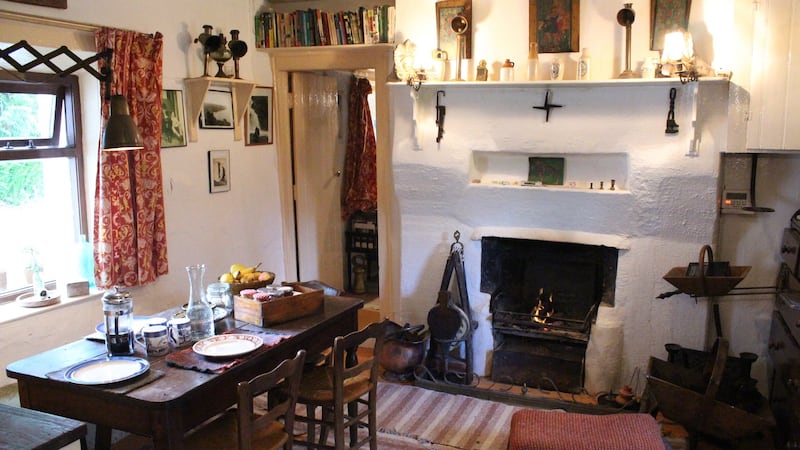
"When people ask me, 'where am I going on my holidays?' and I say, 'Portnoo', the general response is 'where's that?'," Cooper laughs.
Within a 90-minte drive of Enniskillen, the tiny seaside village of Portnoo, about eight kilometres from Ardara or 14 clicks from Glenties, in the heart of Brian Friel country, is completely off the map and that is its appeal. But there are any number of Portnoos in Tyrconnell.
Donegal is also a secret design destination. The county has given the world of fashion and interiors a type of tweed that decorators adore. Magee, McNutt, Studio Donegal and Eddie Doherty are names to covet.
The county is also home to Ireland’s most cutting-edge ecclesiastical architecture thanks to modernist Liam McCormick, an architect who was born in Derry but grew up in Donegal. His St Aengus Church in Burt, whose circular stone walls echo the prehistoric ring of Grianáin Aileach and St Michael’s in Creeslough, and whose white modernist shape emulates the lines of table mountain Muckish, are worshipped by design fans.
Historically, holidaymakers to the county have come from the North, and renowned for their love of fashion and interiors, they have introduced a modernity into villages and townlands, as well as giving many seaside resorts their caravan park culture.
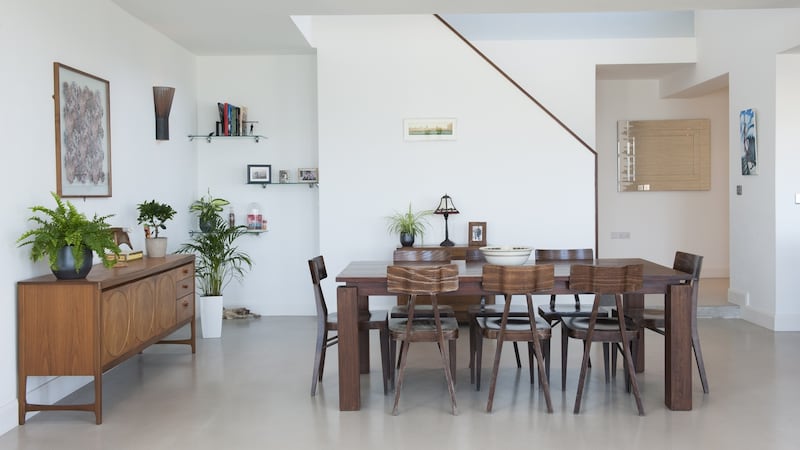
The length of the county’s coastline means that it really isn’t that hard to find a place with sea views – there’s almost an embarrassment of vistas, be they mountain, beach and broad stretches of sea.
The natural resources and talent are all here. What the county now needs is more entrepreneneurs to help highlight its farm fresh produce and to develop a greenway – to capitalise on the railroad route that cuts through its lonely glens and offer visitors an escape from the Donegal drivers – for this is the home of rally car racing and everyone drives like they’re the chasing the black and white flag.
Want to go see for yourself? Here’s three you can rent:
Traditional charm in Ardara
Edouard Chatenoud inherited his Donegal farmhouse from his father Paul, who ran it as a B&B. He has decided to carry on the tradition, adding much-needed central heating to the typical longhouse and its adjacent outhouses.
There are three bedrooms in what was originally the cow byre. It is the only remaining property in the homestead that is thatched and has a traditional half door and small windows. You can rent its three rooms for €300 per night. Breakfast is served in the main house where turf burns in the original hearth and there is a high mantle and simple high shelves for books and knick-knacks.
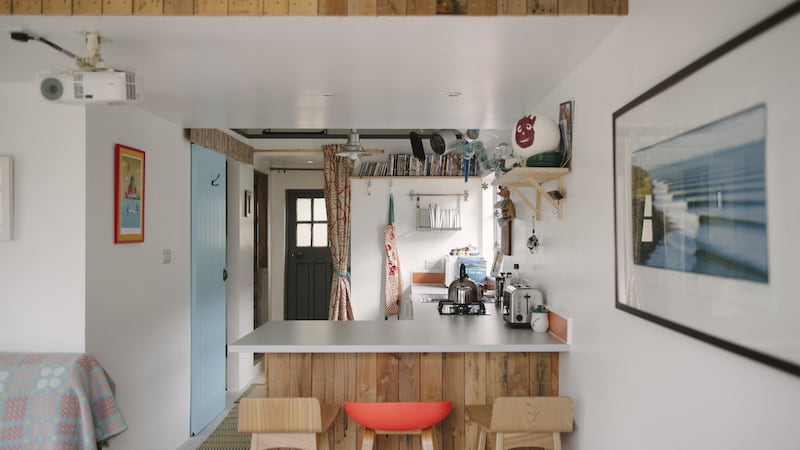
There is also a single room honeymoon cottage with views out to Loughross Point and Maghera Beach, where you can explore some of the caves beneath Slievetooey Mountain, which are accessible at low tide.
thegreengate.eu
airbnb.ie
Let there be light
There is something spellbinding about staying in a lighthouse-keeper’s cottage. The big open sky overhead, with windows offering glimpses of seascapes, is the ultimate place to escape. St John’s Point lighthouse, on the tip of a seven-mile peninsula in south Donegal, about halfway between Donegal town, seat of the O’Donnell Clan, and Killybegs, one of the country’s major fishing ports, is a beguiling place to stay, whatever the weather.
Operated by The Landmark Trust architect Eamonn Monaghan of Co Fermanagh-based Keys and Monaghan to oversee the refurbishment of the historic building. With walls that are more than two feet thick, each of the cottages, have been decorated in what Monaghan calls an almost spartan style, it is in keeping with the surroundings, and sleeps four.
Explore nearby Coral Beach’s blush pink sands about half a mile walk up the headland. Across the bay is Streedagh Beach, at low tide you might hope to discover some relics of the three Spanish Armada ships wrecked here. It is just one of the many stories of ships wrecked in the area. The construction of this lighthouse helped avert many more.

Each cottage costs from €398 for a minimum stay of two nights.
St John's Point is one of two cool lighthouses you can rent in Co Donegal. The other is Fanad lighthouse, the star of the current Toyota commercial. Comprising three lighthouse cottages, it can sleep 10 people. It is available to rent through Great Lighthouses of Ireland.
Irishlandmark. com; Greatlighthouses. com
Surf’s up in coastal contemporary
Dubliner David Larkin discovered Donegal’s coastal charms through his hobby, surfing. London-based for the past 20 years, it started out with him wanting to spend more time with his family who had relocated to Co Fermanagh. He happened on a site for sale in Rossnowlagh. Situated on a hill, it offered a place to drink in the broad views of Donegal Bay.
Designed by architect Gordon Osborne, it was his dad, who was based in Beleek, who managed much of the build. On a very clear day you can see all the way down the coast to Nephin in Co Mayo. A geo-thermal heating system and highly engineered glazing means the place is toasty in even gale force winds.
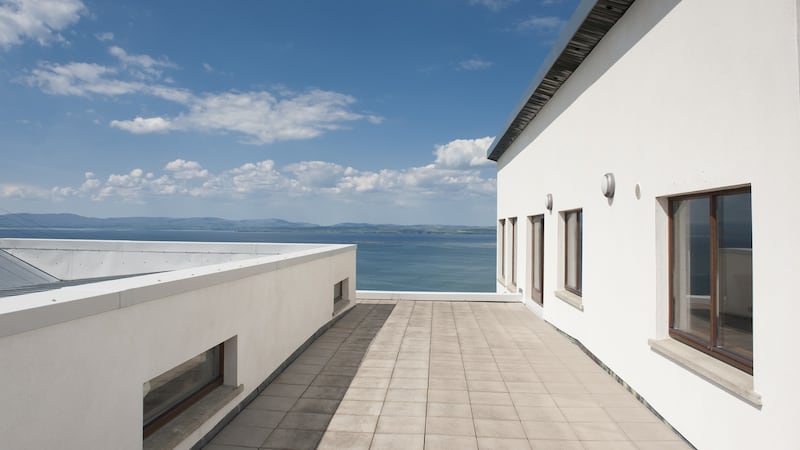
Philip Martin, his brother-in-law – then an interior designer and now running Concrete Studio, a company in Australia that designs counters, planters and sinks from concrete – supplied much of the sanitryware. Larkin added remote controlled rainwater showers and Grohe hardware.
The sleek bathrooms feature unhoned porcelain tiles and rubber flooring, the former imported from Italy.
He didn’t want a “precious” space so there are practical poured concrete floors throughout the ground floor. “I wanted a place that people could feel comfortable using and knocking about in.” A tiled wall bordered in a zig-zag pattern creates an accent on the entrance hall wall.
The main open plan space is double height with exposed beams drawing the eye up the apex of the gable wall.
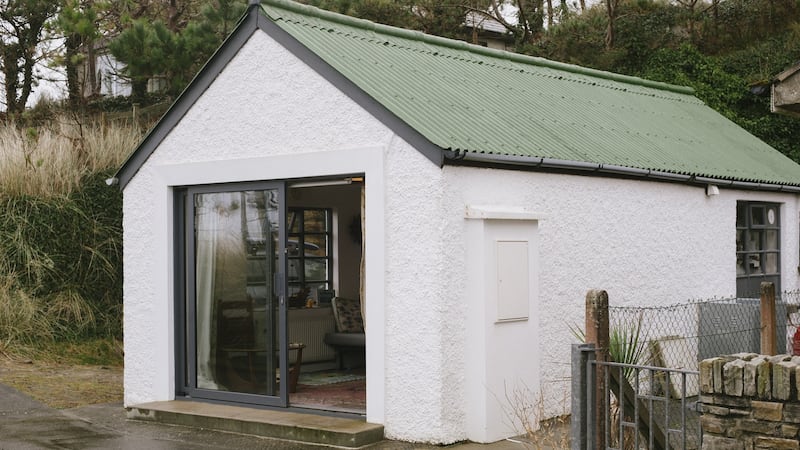
The house has four bedrooms, two of which are en suite. Three are on the ground floor, the fourth upstairs. The scrap fabric headboard in one was “knocked up” in three days by his sister. The whole family rowed in, with his mother doing the gardens and little rockeries.
A private mezzanine at the top of the stairs is a place to escape to. In contrast to the concrete ground floor this is carpeted and has Laura Ashley wallpaper to create a cocoon-like hatch where you can lounge in a birch ply chair and ottoman. This is where you retreat to if you want to watch surround sound TV.
The jawbone of a bull shark is a souvenir that Larkin brought back from Nicuaragua where he spent time surfing in Playa de Gigante, a little fishing village. It is big enough for him to put his head through. A fox head trophy on a wall actually belongs to his sister but he’s minding it for her as she lives in Australia. There are perforated metal light fixtures that he brought home from Morocco, purchased on another surfing expedition to the village of Taghazhout, about an hour north of Agadir.
The kitchen has quartz countertops. Fabricated in Belleek by Gormley Kitchens, Larkin chose it for the way the mica glistens in the stone and for its durability.
“It’s a very social house and we’ve had wonderful times as a family hanging out here,” Larkin says. “If you’re making food in the kitchen you have the big picture window out to the bay in front of you and you can still be with everyone else.”
Sleeps 11
Costs from €140 per night for two mid week to €350
airbnb.ie
Turf shed turned beach shack
Location: Portnablagh on Sheephaven Bay
Interior and wedding photographer Sarah Fyffe’s family have been coming to Portnablagh from Omagh for generations. Her grandfather introduced the family to the seaside village and her father bough a beach house here 40 years ago. It was a place to escape the Troubles and growing up she and her friends could roam freely.
The family still has the main house but she’s moved into the tiny turf shed, about 100sq feet in size, to the rear.
Practically laid out to deal with sand and mud, it was where Sarah and her teenage friends used to bunk when the main house was full but was, like many properties in seaside locations, damp and badly insulated. Now a mother to a young son, she has dry lined the place to make it weatherproof in all seasons.
Donal Connolly, a local plumber and builder from Creeslough, managed the refurbishment for the couple. The budget to refurb the shack was minimal and Connolly created a serviceable kitchen using pallets.
Orange tiles, leftover from a job they did on one of the 10 houses they have lived in over the past decade, adorn the splashback. A Persian carpet, found in the attic of an aunt’s house, softens the look of the rough concrete floor. A G-plan coffee table is another cast off – it had been forgotten about in the garage of their friend Troy. She treasures a pink chair by Hay that she purchased from the Belfast home store Maven.
The couple sleep on a mezzanine bed above the kitchen, which is accessed using a nautical ladder that telescopes open and shut. To the rear of the kitchen is a bunkroom where four-year-old Henry sleeps. The bunks have been fabricated from old fencing posts. A wet room is where the young family wash all the sand off. If you’re lucky you can get a hold of one of the local fishermen heading out to sea and put in a order for some catch of the day.
Sleeps 3
Costs €400 per week.
Contact: Sarah Fyffe: Tel 00 44 7853 296154
Sarah Fyffe Photography: sarahfyffe.com








